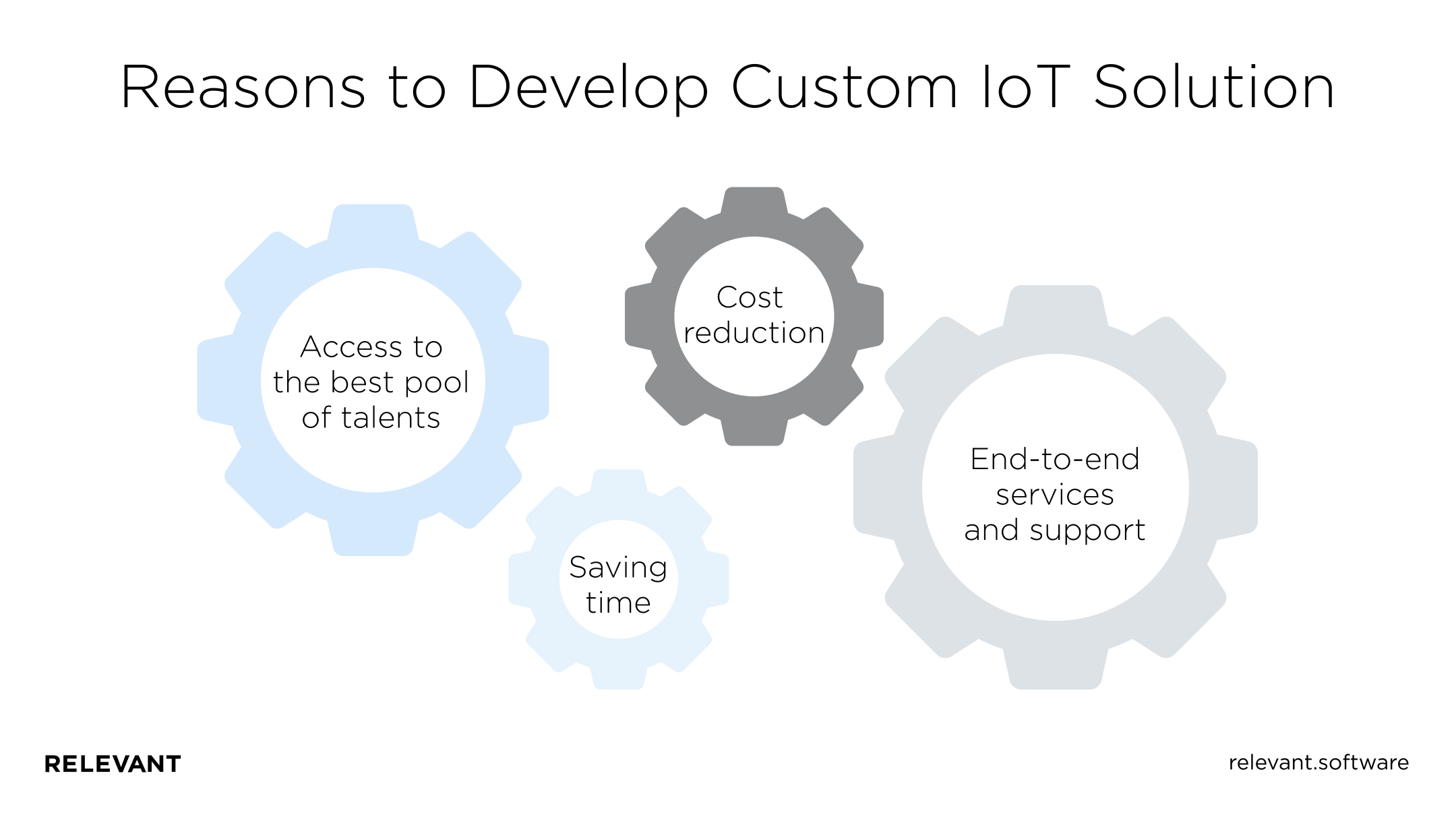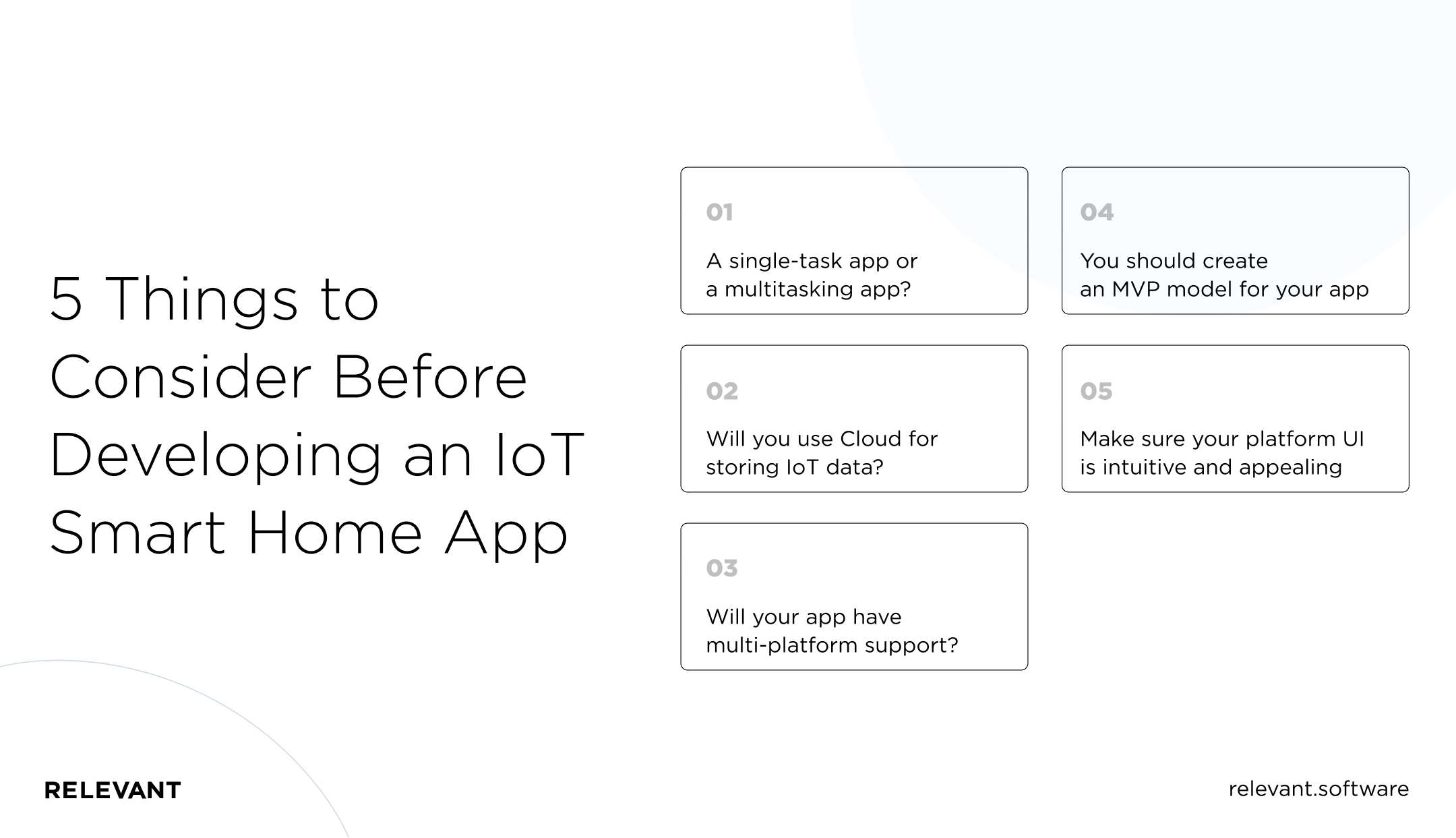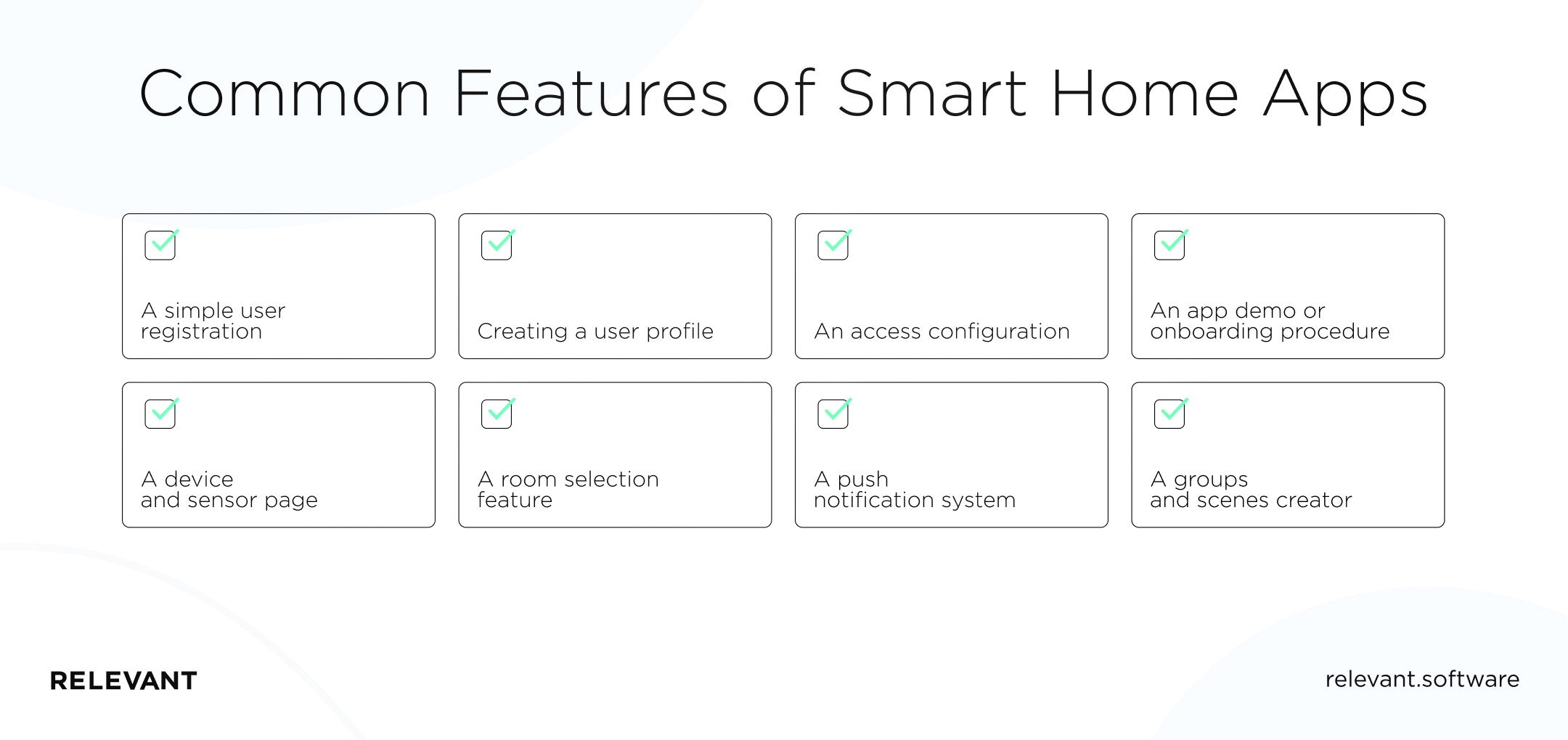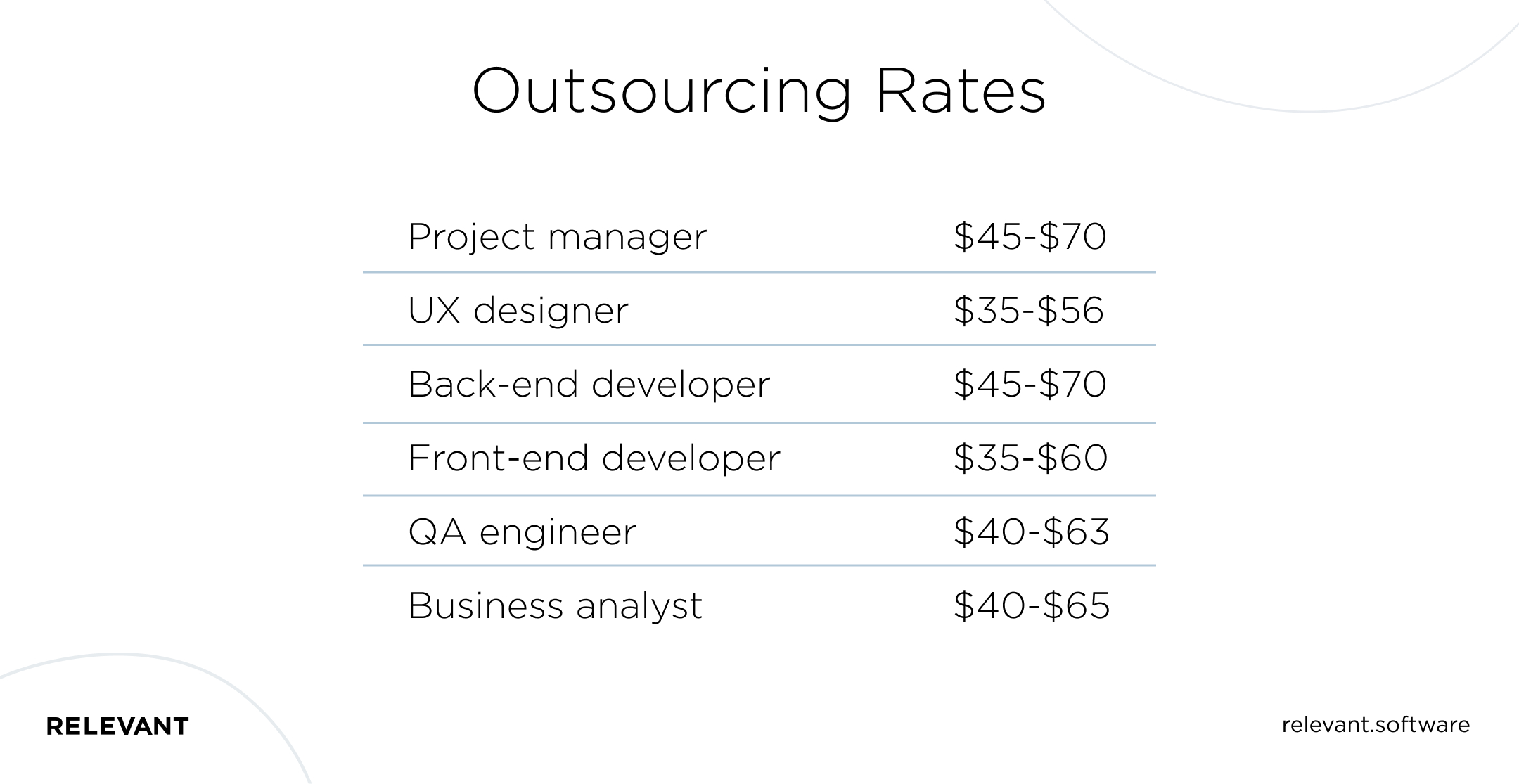All You Need to Know About Smart Home App Development
Updated: August 15, 2024
The Internet of Things (IoT) has changed our everyday life drastically—particularly our homes. Your coffee maker, toaster, refrigerator, and TV are not just connected to the internet but can communicate with each other by sending signals. Amazing, right? And all that is possible thanks to the Internet of Things.
The numbers are impressive. According to a recent report by GlobalData, the home automation market was $35.9 billion in 2020 and is expected to hit a staggering $75.3 billion by 2025 at a compound annual growth rate of just under 16%.

We provide companies with senior tech talent and product development expertise to build world-class software. Let's talk about how we can help you.
Contact us
More and more companies are interested in building applications that allow users to control all of their smart home devices.
If you are one of them, you’ve come to the right place. This article will tell you the essentials of IoT smart home app development, but first, let’s find out how a home automation system works.
Table of Contents
How does a home automation system work?
A home automation system makes life convenient by automating simple tasks around your home. You can interconnect all your devices through the internet and control them remotely with a mobile app or simple voice commands. For instance, you can turn the air conditioning on while you’re away, and when you come back home, you can enjoy the temperature you set.
A basic home automation app needs three components to run: smart hubs, connected mobile apps, and smart devices. All of these are interconnected and communicate through the internet to perform actions remotely.
The system typically works on three levels:
- The simplest level involves monitoring either the devices or an external situation through those devices remotely. For example, a remote temperature control system can show the temperature of your room on your mobile phone.
- The second step is control, where you can turn the system on and off remotely or increase or decrease the temperature on the air conditioning directly from the app.
- The final level is automation, where the system would automatically sense temperature changes and adjust accordingly.
Should I use a ready-made smart home app or develop a custom solution?
Tech giants such as Google and Samsung identified the potential of smart homes early on and introduced robust solutions that are ruling the market to date. You could either go for a pre-built solution or get a customized app developed to turn your home into a smart one.
Some of the most commonly used smart home apps include Amazon Alexa, Google Assistant, and the Samsung Smart Homes app. The features they offer are mostly similar and include accessing supported devices, casting videos on a TV, listening to music, scheduling tasks on a calendar, and a lot more.
Getting a custom solution, on the other hand, has its own benefits.
Since you’ll be outsourcing the project, you get access to some of the finest engineering talents who will develop personalized solutions for your needs. The turnaround time isn’t a lot, and you can set a timeline that suits you. Also, you don’t have to employ and train in-house experts, so development costs go down significantly. The end-to-end services and support of the product are also benefits that should be considered.
Thus, opting for a pre-built solution takes away the element of personalization that a custom-made app may give you.

How do I build an IoT smart home automation application?
Creating a smart home application isn’t that difficult if you find the right team. However, you need to be careful about key areas to develop an app that meets your business needs. Here’s everything you need to know about IoT smart home app development.
Things to consider before developing an IoT smart home app
Let’s start with a couple of things you need to be careful about before jumping into the development process.
- You need to be clear on the type of smart home app you want to create. You could create either a single-task IoT app designed to manage only one specific device or a multitasking app that can handle several devices simultaneously.
- IoT apps collect a lot of data that needs to be managed efficiently and securely. Opting for cloud storage allows you to improve the backup process and cut down on in-house storage costs. If you store data inside a smart home system, you will need to invest in SD cards or an FTP server.
- Going for an app with multi-platform support is usually recommended. However, if you have a small budget, you could start with a simple Android app and expand later.
- You can also create an MVP model of your app that has only the most essential features. This model could be expanded to a full version later.
- Since the point of a smart home is ease-of-access, make sure you build your platform UI as intuitive and appealing as possible.

Common features of smart home automation applications
Even if you build a custom-built solution, there are some core features you can’t afford skipping in your smart home automation app:
- A simple user registration mechanism that is intuitive. Including a sign-up with a social media option would be ideal.
- Creating a user profile that includes customization options and other personal details of the user.
- An access configuration system that allows the user to limit device access for specific user accounts.
- An app demo or onboarding procedure that covers basics on how to set up and operate the home automation system.
- A device and sensor page that lists everything connected to the app at the moment.
- A room selection feature that allows users to save and manage the settings of a certain room.
- A push notification system for important updates and status checks from devices.
- A groups and scenes creator that lets users group devices and create scenes by controlling everything in there.

Thus, you can be sure your application has everything necessary to function properly and be user-friendly.
What about the costs of custom smart home automation app development?
The cost of developing a custom smart home automation app mostly depends on the complexity of the project as well as the talent building the IoT smart home app. Many businesses outsource their development tasks to development firms from Eastern Europe, particularly Ukraine, as they offer high-quality and affordable services.
At the fundamental level, you will need someone to head the project, i.e., a project manager, a UI/UX designer, two or three developers, and finally, a quality assurance engineer. You may also want to hire a business analyst to take care of your data management and analyses so you can make better decisions. Here’s how much these specialists charge on average:

The total charge would be somewhere between $200 and $400 per hour, plus some additional costs you may have to bear.
Why choose Relevant Software as your development partner?
If you choose to outsource developing your IoT smart home app, make sure you research how reliable the company is. Relevant Software is an experienced mobile app development company that has profound expertise in IoT software solutions. Here are some of the IoT projects we’ve successfully delivered.
- Sensor Innovation: a system that combines hardware sensor data with software algorithms to inform users about issues (such as water leaks) at industrial and residential sites. Relevant Software revamped a working model of Sensor Innovation and improved it for better functionality, including the ability to show data directly on a building’s virtual blueprint.
- Airthings: a Norwegian tech company that manufactures indoor radon monitoring products. Our engineers implemented a dashboard on the Airthings website that connects all devices and can be customized according to the user’s preferences. In addition, we created a map that shows the location of and data from each device and uses clustering to reduce load times and increase rendering speed.
The takeaway
If the development of IoT continues as predicted and more households become equipped with networked devices, it is clear that more and more people will use smart home applications. So don’t miss your chance to develop your own app.
If you’re ready to hire an experienced team today, contact Relevant Software!
FAQ
Our core services:
Do you want a price estimate for your project?
Do you know that we helped 200+ companies build web/mobile apps and scale dev teams?
Let's talk about your engineering needs.
Write to us











